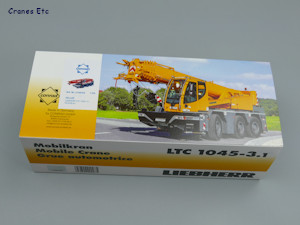 | | Liebherr branded box with label for the livery. |  | 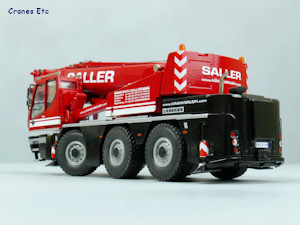 | | Convincing on the road. | 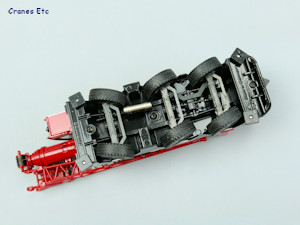 | | Detail underneath. The transmission is partially modelled. | 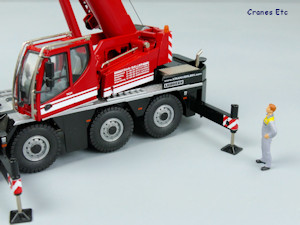 | | Cast-in ladders on the deck. Outriggers have smooth faced pistons. | 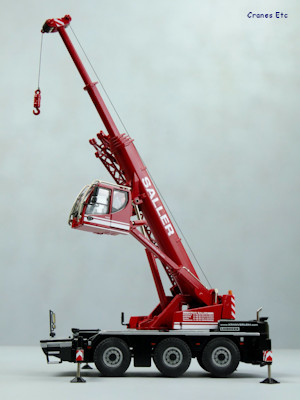 | | Operator can get a good view. | 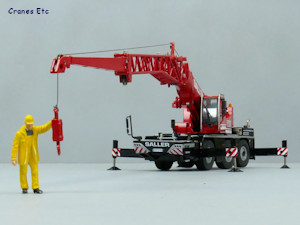 | | Fly jib rigged. | 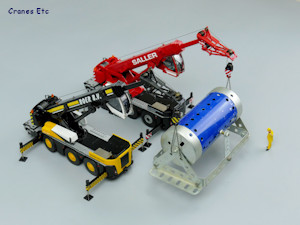 | | Unusual low headroom tandem lift. | 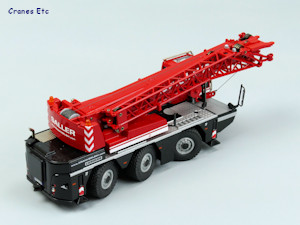 | | Fly jib clipped on, and tool box at the front. | 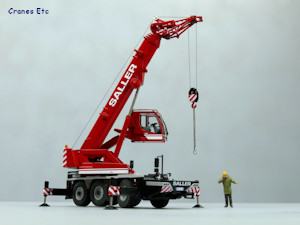 | | Rigged with a short assembly jib. |
|  Comment on this model. Comment on this model.
The Liebherr LTC 1045-3.1 is a three axle crane with a maximum capacity of 45 tonnes. The telescopic boom can reach 36m and the fly jib can be configured up to 13m long. A feature of the crane is the single dual-purpose cab which is used in both travelling and crane modes.
This model is in the colours of Kran Saller which is a German company.
Packaging
The model comes in a Liebherr-branded box which is a sleeve surrounding a couple of expanded polystyrene trays.
The review model had no defects or missing parts.
No instructions are provided and there is no information about the real machine.
Detail
The underside has some elements of the transmission modelled, and there is no drive shaft modelled to the front axle. The wheels are all the same with decent tyres mounted on plastic hubs.
At the front, there is a removable tool box holder which also holds a plastic mirror assembly. The tool box is a nice metal part with very good non-slip texture, highlighted handles, and nice lights and realistic number plate.
The carrier deck has more excellent texturing and there are fixed ladders, and a folding plastic bracket to support the boom. At the rear there is a metal exhaust and the curved body shape is modelled well. A clip-type towing hitch is also provided.
The outrigger beams are single stage and appear to be metal. The pistons are very good being smooth in appearance and with detailed plastic pads.
At the crane mounting point there is a very nice toothed slewing ring visible. The driving cab has metal grab rails, and a mirror and wiper. Inside the cab the detail is quite good. The whole arrangement is mounted on a telescopic beam which is part metal and part plastic, but the colour match is very good.
The crane body has sharp graphics and the orange beacon lights are very good. A mirror clips on but oddly it is not silvered.
The main boom is lifted by a single hydraulic cylinder with a plastic jacket and a good colour match. The boom is a six section telescope with the lowest section having a good structure with the fixed spooling drum being plastic. As the boom sections are diecast, wall thicknesses mean the top section becomes very thin.
At the boom head the pulleys are metal and of high quality.
Two hooks are provided - a three pulley block (with metal pulleys) and a metal single line hook which gives welcome display flexibility.
The fly jib consists of a number of pieces. The lattice work sections are fine metal castings with the offset mechanism being of plastic with a good colour match. It connects to the main boom with hook-over pins at the top, and is secured with separate pins at the bottom. When in transport mode the fly jib rests on plastic brackets which are attached to the main boom.
Features
The axles all steer with the rear two linked together. Because of the linkage not all of the steering modes of the original crane can be replicated. The range of movement is good.
The front storage box is removable but fits rather loosely so is easily dislodged. There is no easy way to connect lifting chains to simulate it being lifted by the crane.
The outrigger beams can be extended and the pads lowered by unscrewing. They are able to support the crane wheels-free.
The cab elevates and extends on its telescopic boom and any pose can be held. The cab also tilts. An unusual feature is that it has an opening windscreen which appears to rely on a plastic hinge.
The crane rotates well. The main boom ram is stiff enough to hold any reasonable pose and load.
The boom sections telescope easily and lock at full extension with a spring clip in each section.
The winch is operated by running a finger over the winch drum as the design of the real crane prevents a discrete key mechanism for the winch to be modelled. Although extensive use of the winch is therefore difficult it has enough friction to hold any reasonable load on the hook.
The fly jib provides a variety of options. It can be posed on the side of the boom although it is a little tricky to get it in the right position. It can have the solid swinging section deployed, or lift at the end of the lattice section. Also the main lattice section can be detached to leave a short assembly jib. A plastic ratchet system allows all the fly jib configurations to be set at a variety of offset angles.
With the crane configured to its maximum height the model is around 100cm or 39 inches high.
Quality
This is a strong model with a high metal content, with plastic used in some locations.
The paint is good and the graphics used are sharp and clear.
Price
The model is fully priced for a limited edition.
Overall
This is a highly functional model of the LTC 1045-3.1 and many of the details are very good too. It is a very nice flexible model of an interesting crane design and makes a good addition to a fleet in Saller colours.
Footnotes
This version of the model first appeared at the 2014 Nuremberg Toy Fair.
|
| |
| 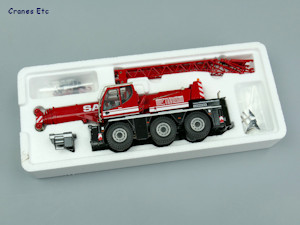 | | In the box. |  | | Profile view. | 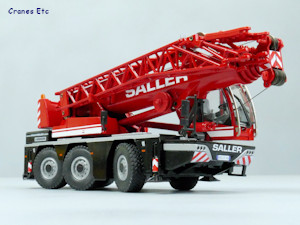 | | Decent steering angle. | 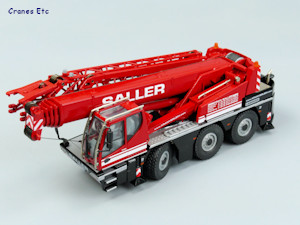 | | A compact 45 tonner. Cab extended forward for road driving. | 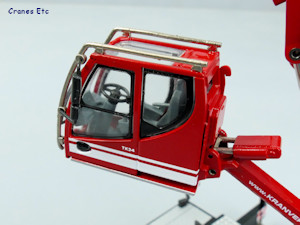 | | Detailed cab. | 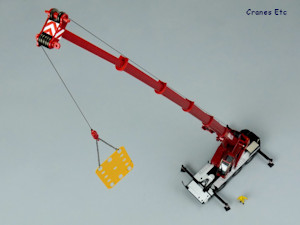 | | Good profile at maximum boom extension. | 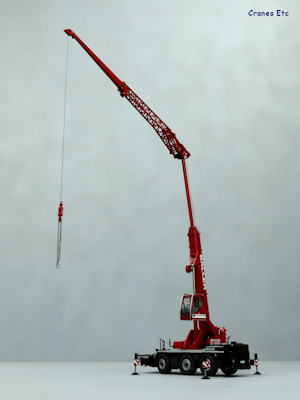 | | Cab elevated and cranked fly jib. | |
| 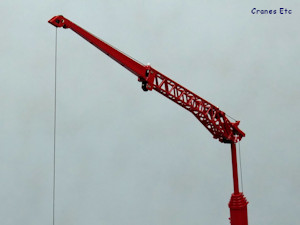 | | Full offset angle. |
|

